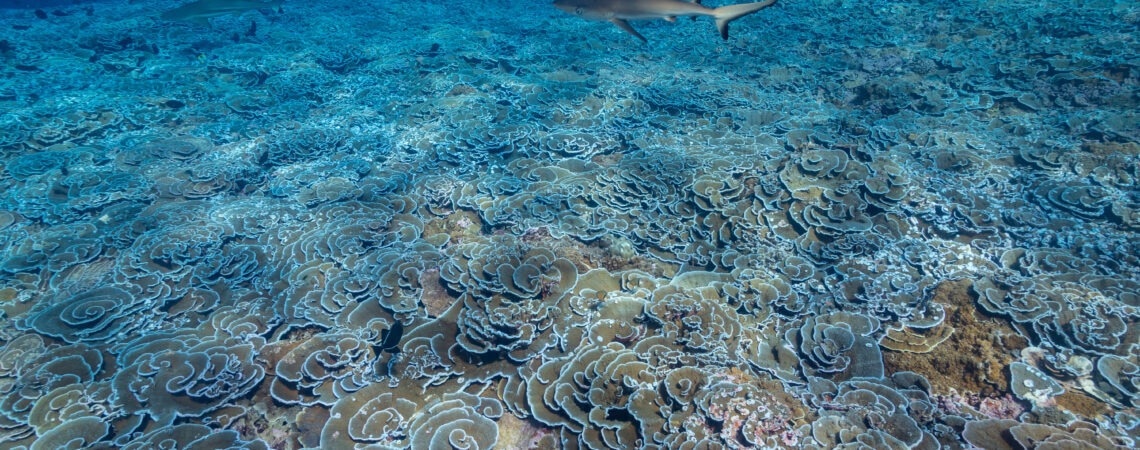Scientists have discovered a hitherto unrecognized source of atmospheric carbon emissions: bottom trawling. Their findings were published in Frontiers in Marine Science.
 Landmark study finds bottom trawling responsible for injecting up to 370 million metric tons of carbon dioxide into the atmosphere every year; reveals trawling in east China, Baltic, North Sea, and Greenland Sea have largest climate footprints. Image Credit: Manu San Félix/National Geographic Pristine Seas
Landmark study finds bottom trawling responsible for injecting up to 370 million metric tons of carbon dioxide into the atmosphere every year; reveals trawling in east China, Baltic, North Sea, and Greenland Sea have largest climate footprints. Image Credit: Manu San Félix/National Geographic Pristine Seas
According to the study, bottom trawling, the practice of dragging a large fishing net across the ocean floor and resuspending some of the carbon in the seafloor sediment, is a significant source of atmospheric carbon pollution at a time when the world is rushing to reduce emissions brought on by fossil fuels, deforestation, and other sources.
According to an earlier study, some carbon in the disturbed silt changes into carbon dioxide underwater. According to recent research, between 55 and 60% of the carbon dioxide created undersea by bottom trawling will reach the atmosphere in nine years.
An estimated 4 million fishing vessels worldwide produce roughly twice as much carbon dioxide into the atmosphere annually as fuel combustion emissions. This is the result of bottom trawling.
We have long known that dragging heavy fishing nets, some as large as ten 747 jets, across the ocean floor destroys sea life and habitats. Only recently have we discovered that bottom trawling also unleashes plumes of carbon, which otherwise would be safely stored for millennia on the ocean floor.
Dr. Trisha Atwood, Utah State University and National Geographic Pristine Seas
Dr. Trisha Atwood added, “Our study is the very first to show that over half the carbon released by bottom trawling eventually escapes into the atmosphere as carbon dioxide over the span of about ten years, contributing to global warming. Much like destroying forests, scraping up the seafloor causes irreparable harm to the climate, society, and wildlife.”
A multinational team of climate and ocean experts from Utah State University, NASA Goddard Institute for Space Studies, the University of California Santa Barbara, Columbia University, James Cook University, and National Geographic Pristine Seas conducted the study, Atmospheric CO2 emissions and ocean acidification from bottom-trawling.
The amount of carbon dioxide created by bottom trawling that eventually reaches the atmosphere was calculated by the researchers using advanced models and data on bottom trawling operations conducted worldwide between 1996 and 2020.
This work expands on recent fundamental studies showing that the yearly carbon dioxide emissions from worldwide aviation are on the same order of magnitude as the amount of carbon dioxide released into the ocean from bottom trawling, which is greater than the annual carbon emissions from most countries.
The East China Sea, the Baltic and North Seas, and the Greenland Sea are among the ocean regions where carbon emissions from bottom trawling are particularly significant, according to the new research.
Although there is currently insufficient information available on the volume and intensity of bottom trawling in these regions, the researchers concluded that trawling in Southeast Asia, the Bay of Bengal, the Arabian Sea, portions of Europe, and the Gulf of Mexico is also likely to be a significant source of carbon emissions.
Right now, countries do not account for bottom trawling’s significant carbon emissions in their climate action plans; our research makes it clear that tackling these and other ocean emissions is critical to slowing the warming of the planet, in addition to restoring marine life. The good news is that reducing bottom-trawling carbon emissions will deliver immediate benefits. The bad news is, delaying action ensures that emissions from trawling will continue seeping into the atmosphere a decade from now.
Dr. Enric Sala, National Explorer in Residence and Executive Director, Pristine Seas
The latest study evaluates the fate of carbon that is left trapped in ocean waters following bottom trawling. It comes to the conclusion that a greater degree of localized ocean acidification results from the 40%–45% of the total carbon that is removed from the ocean floor by trawling remaining in the water. The local plant and animal life is harmed by this increasing acidity in the fishing region.
There are more issues with bottom trawling than just the impacts from carbon — biodiversity and sustainability, for instance, but this ‘marine deforestation’ is large enough to be noted and assessed. Hopefully, this can lead to policy efforts that can try to maximize benefits across all of the impacts.
Gavin A. Schmidt, Director, NASA Goddard Institute for Space Studies
Journal Reference:
Atwood, T. B., et.al. (2024). Atmospheric CO2 emissions and ocean acidification from bottom-trawling. Frontiers in Marine Science. doi.org/10.3389/fmars.2023.1125137.